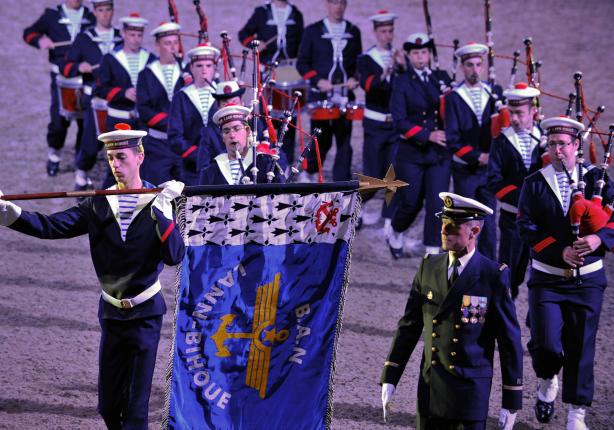Le Bagad de Lann Bihoué
The Bagad was born in August 1952 on the naval aeronautical base of Lann-Bihoué near Lorient.
It was formalized by ministerial decision on September 11, 1956.
Image

The instruments played are the Scottish bagpipe, the bombarde (ancestor of the oboe) which is typically Breton, and finally the percussion drums for rhythm.
With 35 ringers, the Bagad can evolve during dawns, parades and concerts.
They participate in very diverse services, parades, carnivals, nautical and folk festivals, official or private receptions.
He was received by the President of the Republic and participated in the parade of July 14, 1999 on the Champs Elysées. The costume is that of the French Navy in ceremonial dress.
The year 2001 was a turning point in the life of the bagad: in fact, the end of the conscription and the arrival of women in the formation required an internal reorganization, now the tricorn is mixed with the red pompoms, the Bagad evolves.
From now on, they are employees with one-year contracts renewable 3 times. The uniform of the sailor or quartermaster being the raison d'être of the Bagad, the bell ringers cannot therefore stay more than 4 years in training.
Today, the Bagad pursues its dual vocation: to show the French Navy, by the uniform and the discipline of training in France and abroad, often far from the sea; and testify to the richness of the Celtic cultural heritage, by interpreting with talent a quality repertoire.



